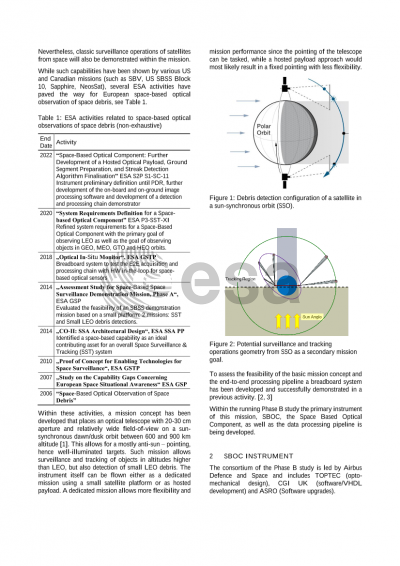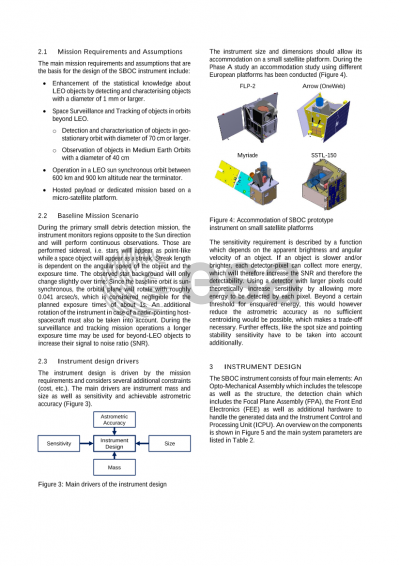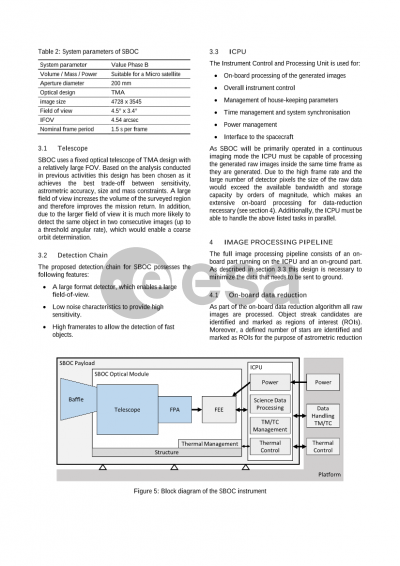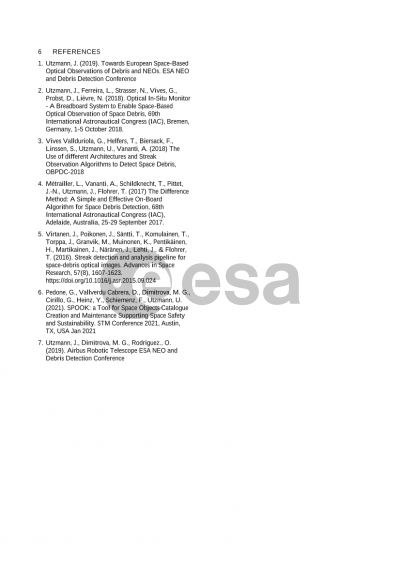Document details

Abstract
As part of the ESA Space Safety Programme the Space Debris Office is undertaking research and technology developments to ensure Europe’s capability of monitoring the space-related traffic and in particular space debris that may endanger the space infra-structure. This encompasses the understanding and assessment of the amount, size distribution and location and density of debris in various Earth orbits with a particular emphasis on Low Earth Orbits, the region where the highest density of manmade debris objects can be found.
In order to enhance the capabilities of Earth based observations made using radar and optical technologies it is planned to place an optical telescope in a Low Earth Orbit in a Sun synchronous orbit, which allows a permanent anti-sun viewing direction in order to maximise illumination of observed objects.
The feasibility of space-based optical observations using a telescope with around 20 cm aperture in such orbit has been demonstrated in previous activities undertaken as part of the ESA SSA, GSP, TRP and GSTP technology programmes. From these activities a viable concept has been derived that showed its potential of improving the statistics on such objects that would significantly enhance the knowledge currently established in the sub-catalogue small-size space debris population in LEO.
The Space-Based Optical Component (SBOC) instrument is currently in its Phase B2, envisaged launch date for the corresponding VISDOMS (Verification of In-Situ Debris Optical Monitoring from Space) mission is 2027.
Main objectives of the ESA S2P S1-SC-11 SBOC Phase B activity can be summarised in the following three pillars:
• Instrument preliminary definition including requirements consolidation and maturation of the design to achieve system SRR and PDR
• Further development and de-risking of the on-board and on-ground image processing software
• Development of a detection and processing chain demonstrator using simulated and real-world images and performing end-to-end tests of the image processing software
The consortium consists of Airbus Defence and Space (prime), TOPTEC (opto-mechanical design), CGI (software/VHDL development) and ASRO (SW upgrades).
The paper will provide an overview of the objectives of the mission, system requirements, design of the instrument and image processing developments.
Preview







